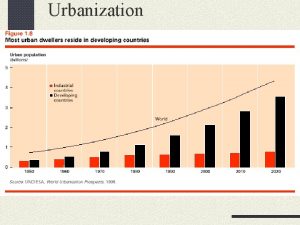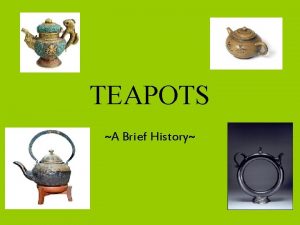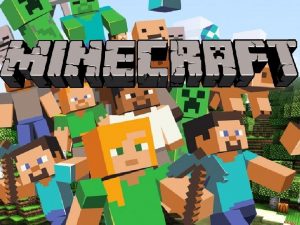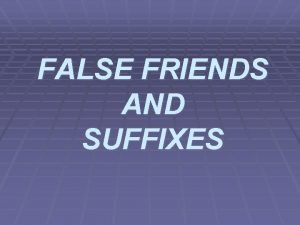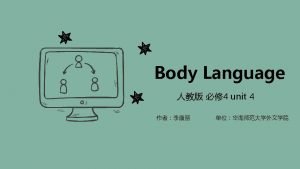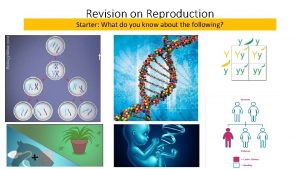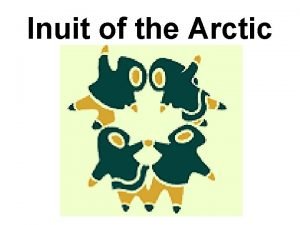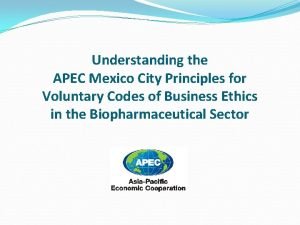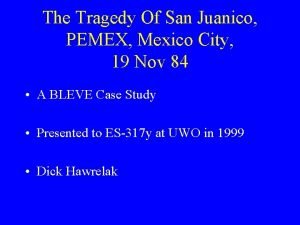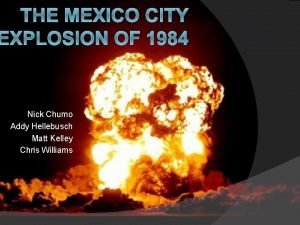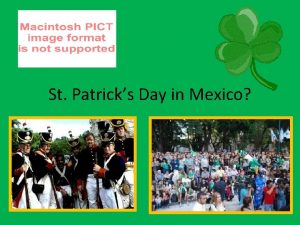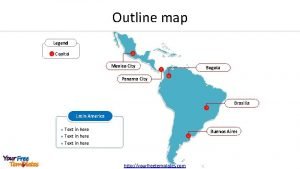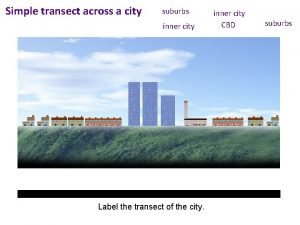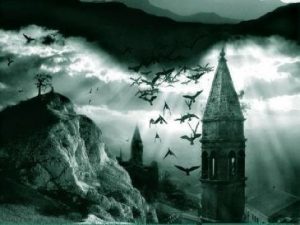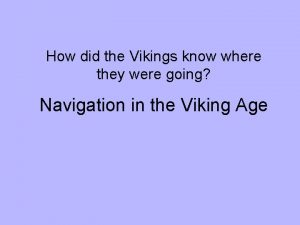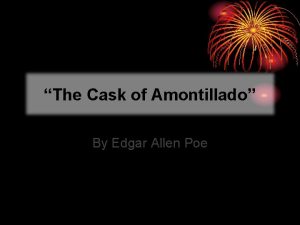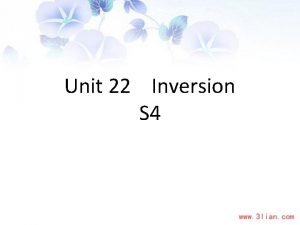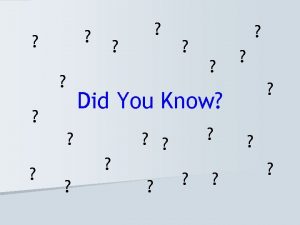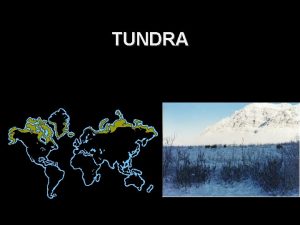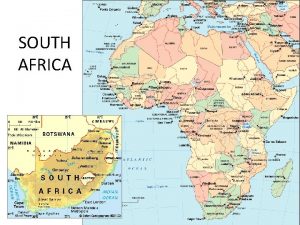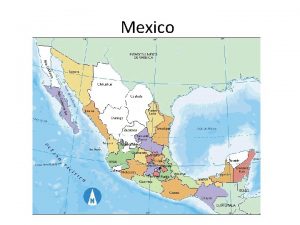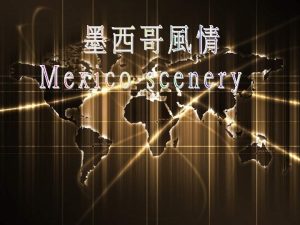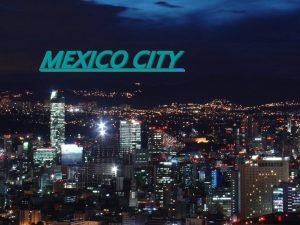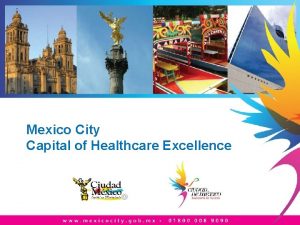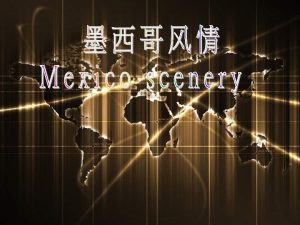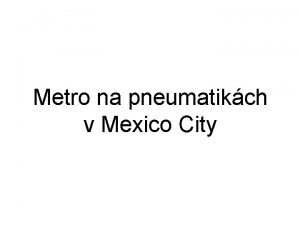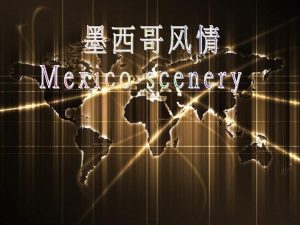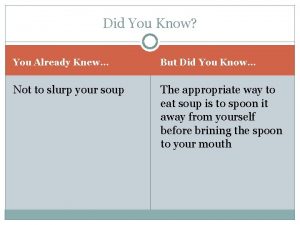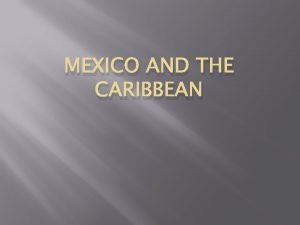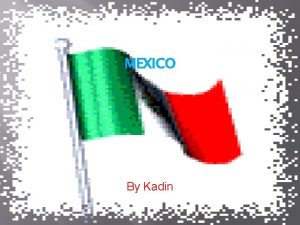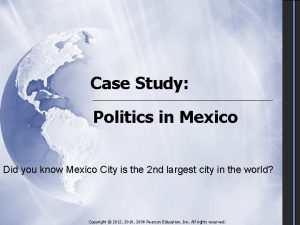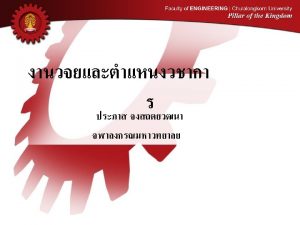Mexico Did you know Mexico City is the


























































- Slides: 58

Mexico Did you know Mexico City is the 2 nd largest city in the world? *Adapted from AP Comparative Government and Politics by Ethel Wood.


Introduction § Model LDC § “Mexican Miracle” § Zapatistas and Chiapas § Newly industrialized countries § 2006 Election

Sovereignty, Authority and Power § Spanish arrival in early 16 th century § Centralized and authoritarian rule § Significant economic growth and decentralization reshaping political system.

Legitimacy § Revolution of 1910 -1911 § Institutional Revolutionary Party (PRI) § Historical Traditions: § § Authoritarianism Populism Divisions within elite Instability and legitimacy issues

Political Culture Some important characteristics of the national identity are: § The importance of religion § Patron-clientism § economic dependency

Geographical features § Some geographical features that have influenced the political development of Mexico are: § Mountains and deserts, varied climates § Natural resources § A long (2000 -mile-long) border with the United States § 106 million population § Urban population

Political and Economic Change § Historical influences § Independence in 1821 § Colonialism § Independence/new nationhood § Porfiriato

Colonialism § From 1519 to 1821 Spain controlled the area that is now Mexico. § Social status hierarchy, with Spanish born in Spain on top and the native Amerindians on the bottom. § Colonialism left several enduring influences: § cultural heterogeneity § Catholicism § economic dependency.

INDEPENDENCE: NEW COUNTRY (1810 -1911) § Spain finally recognized Mexico's independence in 1821. § Stability and order did not follow, with a total of thirty-six presidents serving between 1833 and 1855. § Important influences during this period were: § § instability and legitimacy issues rise of the military. domination by the United States liberal vs. conservative struggle

“EL PORFIRIATO" (1876 -1911) § Porfirio Diaz - one of Juarez's generals - staged a military coup in 1876 and instituted himself as the President of Mexico with a promise that he would not serve more than one term of office. § § Ruled Mexico with an iron hand for 34 years. § Influences of the "Porfiriato" are: § § stability authoritarianism foreign investment and economic growth growing gap between the rich and the poor § Diaz' regime ended with a coup from within the elite, sparking the Revolution of 1910.

Influences since 1910 § The Revolution of 1910 marked the end of the "Porfiriato" and another round of instability and disorder.

THE CHAOS OF THE EARLY 20 TH CENTURY § Revolution of 1910 § Patron-client system § caudillos - political/military strongmen from different areas of the country - rose to challenge one another for power. § Two popular leaders - Emiliano Zapata and Pancho Villa - emerged to lead peasant armies and establish another dimension to the rebellion.

Which led to… § Constitution of 1917 § Conflict with the Church § The Establishment of the PRI

THE CARDENAS UPHEAVAL 1934 - 1940 § “The Roosevelt of Mexico” brought change § Redistribution of land § Nationalization of industry Investments in public works § Encouragement of peasant and union organizations § Concentration of power in the presidency

THE EMERGENCE OF THE TECNICOS AND THE PENDULUM THEORY § Pendulum Theory § Tecnicos § Politicos § Mexican Miracle

Citizens, Society and State § Cleavages that have direct impact on the political system: § Urban v. rural § Social class § Mestizo v. Amerindian § North v. south

Political Participation § Protests: citizens included in political process: § Tlatelolco Plaza § Chiapas – Zapatista uprising § Oaxaca – 2006: fraudulent elections

Patron-Client System § Roots in warlordism and loyalty to the early 19 th century caudillos. § Camarilla § Most positions within the President's cabinet are filled either by supporters or by heads of other camarillas that the President wants to appease. § Patron-Clientism: § § compromise among contending elites behind the scenes conflict resolution distribution of political rewards control in the hands of the government elite § 2006: Controversy over the Presidential election

Voter Behavior § Factors that influence voter behavior today: § PRI controlled elections on local, state, and national levels. § Competing parties exist § Voter turnout high in 1994 - 78% § Over 60% last two presidential elections § Factors that influenced presidential election 2006 § § § Region Education Income

Civil Society § § § PRI = Umbrella party over elites Public protests are acceptable PRI – state corporatism: controlled interest groups § What’s next? § Old state corporatism § Neocorporatism § pluralism

Political Institutions § Mexico is a country in economic and political transition § Underdeveloped economy § Political parties becoming more competitive § Political and economic reforms have altered the ways that government officials operate.

Developed? Developing? Or Less Developed? § § § GNP per capita PPP HDI Economic dependency Economic inequality § Somewhere in the middle

Transitional Democracy § Political accountability § Political competition § Political freedom § Political equality

Mexico’s Democratic Characteristics § Mexico - especially in recent years - has developed some democratic characteristics, but still has many vestiges of its authoritarian past. § Another often used standard for considering a country a democracy is the longevity of democratic practices. § § If a nation shows consistent democratic practices for a period of 40 years or so (a somewhat arbitrary number), then it may be declared a stable democracy. § § Mexico does not fit this description.

Political parties § Three largest parties: § PRI § PAN § PRD

PRI - The Partido Revolucionario Institucional § party is characterized by: § a corporatist structure § patron-client system

PAN - The National Action Party § § § PAN's platform includes: regional autonomy less government intervention in the economy clean and fair elections good rapport with the Catholic Church support for private and religious education § PAN is usually considered to be PRI's opposition to the right.

PRD - The Democratic Revolutionary Party § PRI's opposition on the left. § Their presidential candidate in 1988 and 1994 was Cauhtemoc Cardenas § PRD has been plagued by problems § trouble defining a left of center alternative to the market-oriented policies established by PRI. § Their leaders have also been divided on issues poor organization § Cardenas is not as charismatic as his famous father.

ELECTIONS § Directly elected president, Chamber of Deputy Representatives, and Senators, as well as a host of state and local officials. § Typical voter profiles are: § PRI - small town or rural, less educated, older, poorer § PAN - from the north, middle-class professional or business, urban, better educated (at least high school, some college) § PRD - younger, politically active, from the central states, some education, small town or urban

ELECTION REFORMS § Campaign finance restrictions § International watch team § The election of 2000 broke all precedents when a joint PAN/PRD candidate Vicente Fox - won the presidency, finally displacing the 71 year dominance of PRI.

Elections of 2006 § Elections in Mexico today are : § Competitive primarily in urban areas. § Fraudulent § patron-client system encourages bribery and favor -swapping § Pressure for fairer elections § PRI lost in both houses § Calderon v. Obrador

Interest Groups § Business interests have networked with political leaders to protect the growth of commerce, finance, industry and agriculture. § State corporatism v. neocorporatism § Labor has been similarly accommodated within the system § Powerful interest group = Educational Worker’s Union

Media § PRI monopolized media § In 1980’s, media became more independent. § Access to broader range of political opinions.

Government Institutions § Mexico is a federal republic with three branches: § executive branch § legislature § judiciary § Democratic in name, traditionally the country has been authoritarian and corporatist. § Theory v. Practice: § According to the Constitution of 1917, Mexican political institutions resemble those of the U. S. § Actually, Mexican system is very different from that of the United States. § Strong presidential system.

The Executive § Fox v. Labastida 2000 § This election may mark the end of patron-clientism and the beginning of a true democratic state. § Policy making in Mexico had centered on the presidency. § The president almost always was a member of the preceding president's cabinet. § Calderon v. Obrador 2006

Presidential Details § The President is the Head of the United Mexican States, which is the official name of the country. § Directly elected by the people § Fixed term of six years (sexenio). The President cannot be re-elected. § The President appoints a Cabinet of 17 Secretaries, plus a Comptroller General and the Attorney General § President Vicente Fox's administration: Special Coordinators have been appointed for Public Policies, the Citizens Alliance, the Strategic Planning and Regional Development and the National Security Council.

Vicente Fox § In 1991 Fox ran for governor § Ran again in 1995 and won after significant electoral reforms. § In 1997 Amigos de Fox formed - a Mexican-style PAC - to help Fox seek the presidency. § Fox won the hearts of the Mexican voters. His pragmatic approach steered the conservative party more toward the middle, and even captured PRD support, after PRD became disenchanted with Cardenas. § Goals: § § § Pluralism Decentralization Electoral Reform Rule of law Anti-Narcotics

Andres Manuel Lopez Obrador § PRD § Former Mayor of Mexico City § Election of 2006

President Felipe Calderon § President 2006 -2012 § PAN § Controversy

THE BUREAUCRACY § Almost 1 1/2 million people work in the federal bureaucracy, most of them in Mexico City. § Officials are generally paid very little, but those at high and middle levels have a great deal of power. § Para-statal sectors (quangos) § PEMEX

The Legislature § Bicameral § Chamber of Deputies § Senate. § All legislators are directly elected § PRI's grip on the legislature slipped earlier than it did on the presidency. § A competitive multiparty system begins to emerge

§ Chamber of Deputies and the Senate. § Within Congress, senators and deputies debate and make new laws or change old ones. § Each state is represented by four senators, and the people are represented by deputies (similar to MPs). § Elections for the Chamber of Deputies (500 seats) are held every three years, and for the Senate (128 seats) every six years.

The Judiciary § Mexico does not yet have an independent judiciary, nor does it have a system of judicial review. § Constitution of 1917 is still in effect, it is easily amended and does not have the same level of legitimacy as does the U. S. Constitution. § Federal and state courts § The Supreme Court is the highest federal court, and on paper it has judicial review, but in reality, it almost never overrules an important government action or policy. § Historically, then, the courts have been controlled by the executive branch. § Change: § President Zedillo § Vicente Fox has vowed to work for an independent judiciary.

The Military § Military generals dominated Mexican politics throughout the 19 th century and into the early 20 th century. § Depoliticizing the military § Military has been heavily involved in efforts to combat drug trafficking, and rumors abound about deals struck between military officials and drug barons.

Policies and Issues The Economy § Standard of living has improved greatly since the 1940 s. § Rates of infant mortality, literacy, and life expectancy have steadily improved. § Provision of health and education services have expanded, despite severe cutbacks after the economic crisis of 1982. § "THE MEXICAN MIRACLE" § Between 1940 and 1960 Mexico's economy grew as a whole by more than 6 percent a year. § Industrial production rose even faster, averaging nearly 9 percent for most of the 1960 s. § All this growth occurred without much of the inflation that has plagued many other Latin American economies.

PROBLEMS § A growing gap between the rich and the poor was a major consequence of the rapid economic growth. § Rapid and unplanned urbanization

REFORM § One of the most dramatic economic turnarounds in modern history. § Sharp cuts in government spending § Debt reduction § Privatization § Problems persist today, particularly those of income inequality, urban planning, and pollution.

Policies and Issues Foreign Policy § Drug Trafficking § Immigration Policy § Maquiladora and NAFTA

ETHNIC REBELLIONS § Zapatistas § The EZLN (Zapatista National Liberation Front began in 1994 in the southern state of Chiapas in protest to the signing of the NAFTA treaty. § § The Zapatista rebellion was based on ethnicity - the Amerindian disaffection for the mestizo, urban-based government. § It has since spread to other areas and ethnicities, and it represents a major threat to Mexico's political stability.

Democracy § Tradition of authoritarianism works against democratization. § Modernization of the economy, the political value of populism, and democratic revolutionary impulses work for it. § CFE (Federal Election Commission)


Terms to Know § § § § Zedillo Salinas Cardenas Colosio Porfirio Diaz Emiliano Zapata Bracero Cacique Camarilla Capitalinos Caudillos Chiapas CTM Asymmetrical interdependence § Pendulum theory Corporatism Ejidos Democardura Los Pinos NAFTA Municipio PRONASOL PAN PRD PRI Patron-client Porfiriato Sexenio Tecnico Toltec Zapatistas Co-optation Mexico’s miracle Mexican Revolution

Discussion Questions § What are the lasting consequences of the Mexican Revolution on contemporary Mexican politics? § Explain the unique characteristics of the office of the President of Mexico.

Discussion Questions § Evaluate the term limitation rule of nonreelection for Mexico. § Why was the Chiapas insurgency important? § Explain the significance of Mexico’s efforts at election reform.

Discussion Questions § Discuss the control of media and its relevance to the election process. § What are the trade-offs between developing an export led economy and a self-sustaining, subsistence based agricultural economy?

Discussion Questions § Discuss the development and rules regarding the separation of church and state in Mexico. Why was there an anticlerical movement and what role does the church now have in Mexican politics?

Discussion Questions § What did Porfirio Diaz mean by the statement: ‘Poor Mexico! So far from God and so close to the United States. ’ § Compare the nationalization of Mexico’s petroleum and its domestic consequences with that of Nigeria.
 Primate cities
Primate cities Did you go or did you went
Did you go or did you went Teapots history
Teapots history Direct and reported speech worksheet
Direct and reported speech worksheet You are
You are Did you know
Did you know What did you do in london last weekend
What did you do in london last weekend Suffixes for kind
Suffixes for kind Have you ever shoplifted
Have you ever shoplifted Suffixes for friend
Suffixes for friend Know history know self
Know history know self Do deep generative models know what they don’t know?
Do deep generative models know what they don’t know? I'm holding on to your promises you are faithful
I'm holding on to your promises you are faithful ,,
,, You're a poet and you don't know it
You're a poet and you don't know it When you're blue and you don't know
When you're blue and you don't know How to know if youre asexual
How to know if youre asexual Do you know who you are
Do you know who you are Wherever you lead i will follow
Wherever you lead i will follow My wish for you is that life becomes
My wish for you is that life becomes Mexico principles
Mexico principles San juanico disaster case study
San juanico disaster case study What is the river that separates texas and mexico
What is the river that separates texas and mexico Eater mexico city
Eater mexico city Bleve mexico city 1984
Bleve mexico city 1984 St patricks day mexico city
St patricks day mexico city Whats the weather in buenos aires
Whats the weather in buenos aires Mexico map with capital
Mexico map with capital Griffin-ford model
Griffin-ford model Cbd inner city suburbs
Cbd inner city suburbs Sundays too my father got up early analysis
Sundays too my father got up early analysis Cask of amontillado questions and answers
Cask of amontillado questions and answers How did the vikings know where they were going
How did the vikings know where they were going What is luchresi's role in the cask of amontillado
What is luchresi's role in the cask of amontillado Inversion phrases
Inversion phrases Kv lesson plan
Kv lesson plan How did you become you?
How did you become you? Hát kết hợp bộ gõ cơ thể
Hát kết hợp bộ gõ cơ thể Bổ thể
Bổ thể Tỉ lệ cơ thể trẻ em
Tỉ lệ cơ thể trẻ em Voi kéo gỗ như thế nào
Voi kéo gỗ như thế nào Chụp phim tư thế worms-breton
Chụp phim tư thế worms-breton Hát lên người ơi
Hát lên người ơi Môn thể thao bắt đầu bằng từ đua
Môn thể thao bắt đầu bằng từ đua Thế nào là hệ số cao nhất
Thế nào là hệ số cao nhất Các châu lục và đại dương trên thế giới
Các châu lục và đại dương trên thế giới Cong thức tính động năng
Cong thức tính động năng Trời xanh đây là của chúng ta thể thơ
Trời xanh đây là của chúng ta thể thơ Cách giải mật thư tọa độ
Cách giải mật thư tọa độ Phép trừ bù
Phép trừ bù độ dài liên kết
độ dài liên kết Các châu lục và đại dương trên thế giới
Các châu lục và đại dương trên thế giới Thể thơ truyền thống
Thể thơ truyền thống Quá trình desamine hóa có thể tạo ra
Quá trình desamine hóa có thể tạo ra Một số thể thơ truyền thống
Một số thể thơ truyền thống Cái miệng bé xinh thế chỉ nói điều hay thôi
Cái miệng bé xinh thế chỉ nói điều hay thôi Vẽ hình chiếu vuông góc của vật thể sau
Vẽ hình chiếu vuông góc của vật thể sau Biện pháp chống mỏi cơ
Biện pháp chống mỏi cơ
